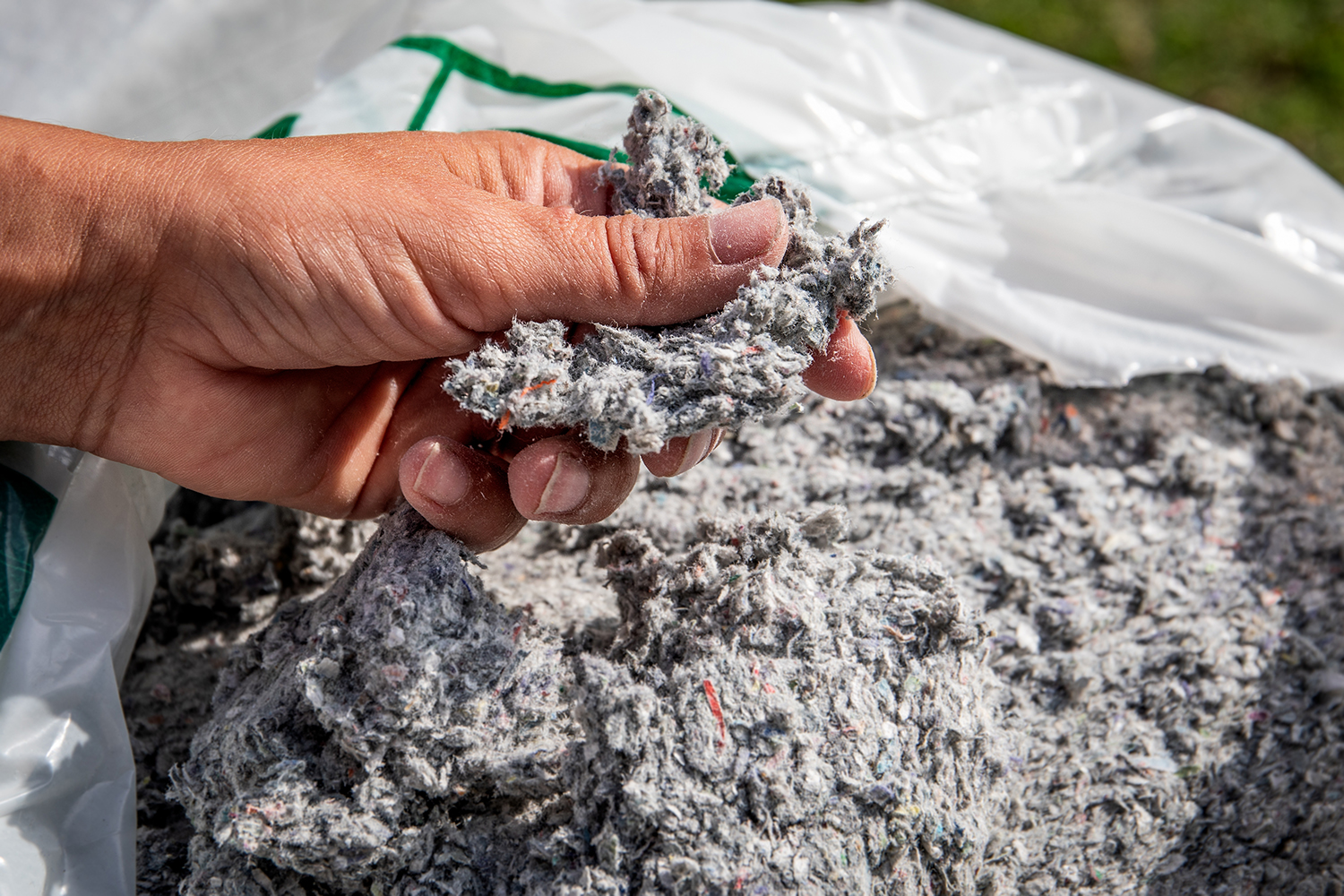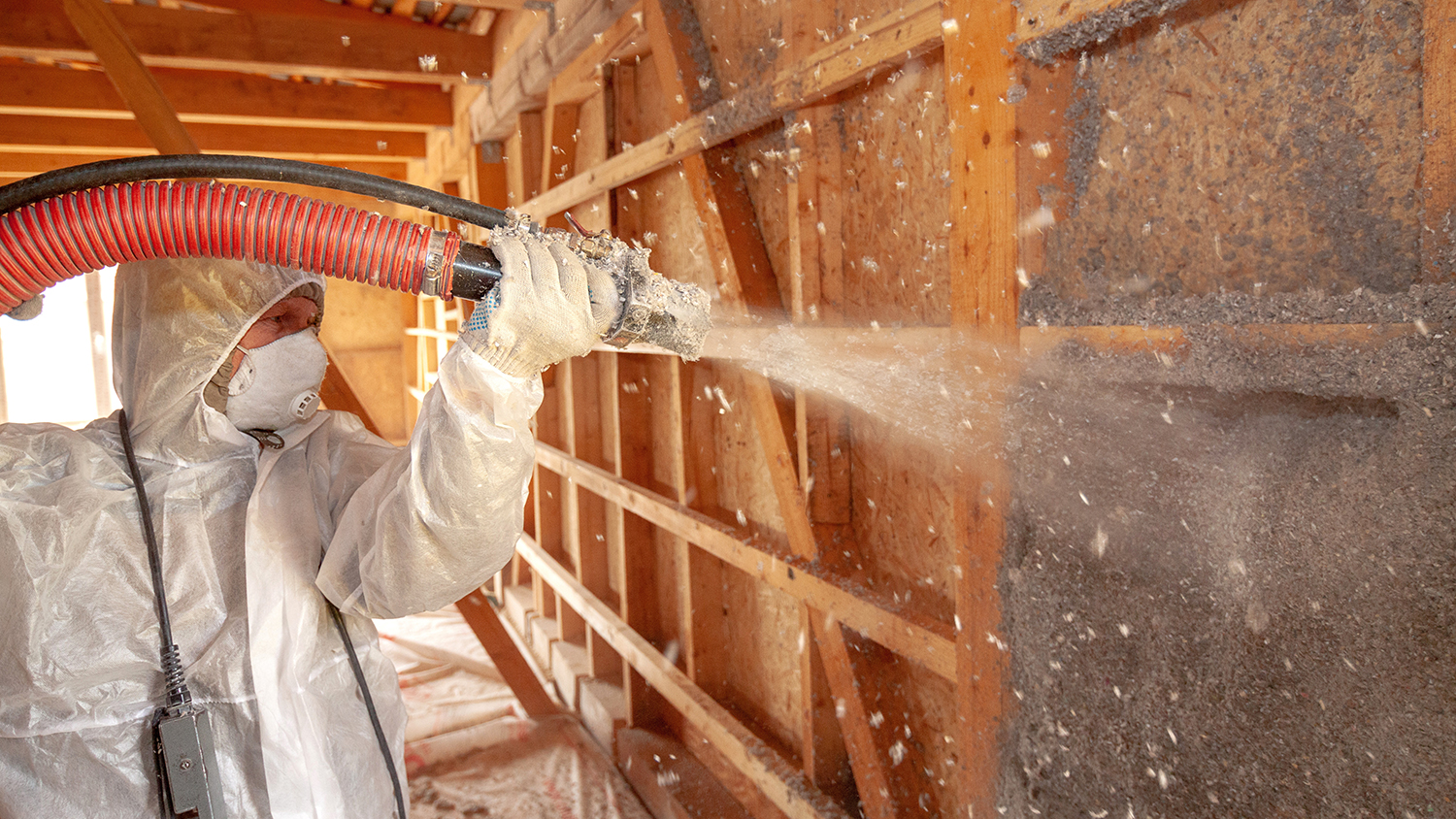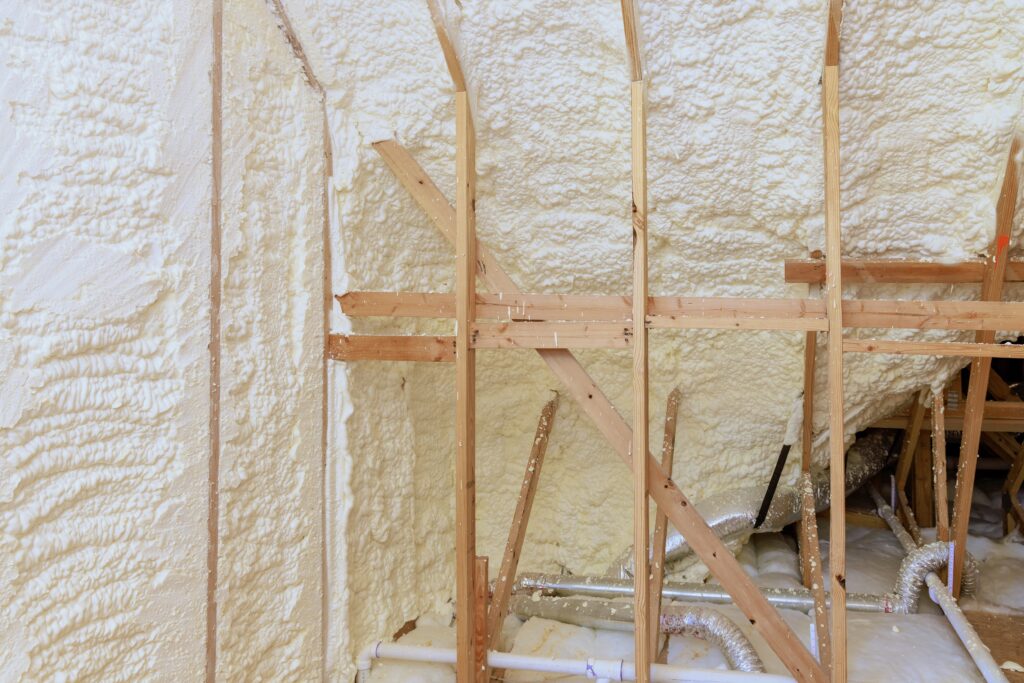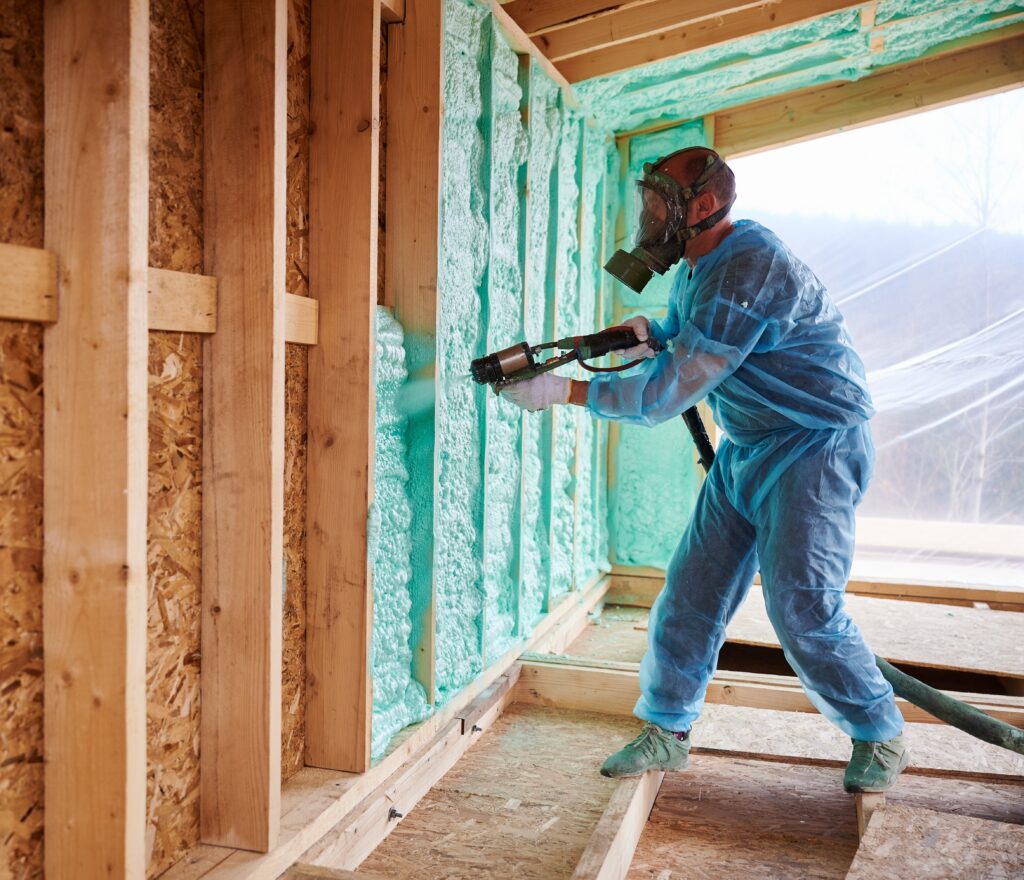Is your Denver, Golden, Aurora, Littleton, Lakewood, or other front-range home feeling drafty in the winter and sweltering in the summer? The culprit might be lurking in your attic. Poor insulation can lead to significant energy loss, uncomfortable temperatures, and sky-high energy bills. But there’s a solution: blown-in attic insulation. This effective and affordable insulation method can transform your home into a cozy haven while saving you money. In this comprehensive guide, the experts at Mile Hi Roofing will share everything you need to know about installing blown-in insulation in an attic.
What is Installing Blown-In Insulation in an Attic?
Imagine your attic as a giant coffee mug with a lid. In the winter, your home’s warmth rises like steam, trying to escape through any gaps in the “lid” (your attic floor). In the summer, the scorching sun bakes the “lid,” turning your attic into an oven. This is where insulation comes in – it acts like a cozy blanket for your coffee mug, keeping the warmth in during the winter and the heat out during the summer.
Blown-in insulation is a type of insulation that is, you guessed it, blown into your attic space. It consists of tiny particles of insulation material, like cellulose, fiberglass, or rockwool, that are blown in using specialized equipment. This creates a seamless layer of insulation that fills every nook and cranny, effectively sealing any gaps and preventing energy loss.
Why Should You Understand What’s Going on Up There?
Understanding the process of installing blown-in insulation in an attic is crucial for several reasons:
- Energy Savings: Proper attic insulation can significantly reduce energy loss, leading to lower heating and cooling costs and a smaller carbon footprint.
- Improved Comfort: A well-insulated attic helps maintain a consistent temperature throughout your home, eliminating drafts in the winter and reducing heat buildup in the summer.
- Enhanced Home Value: Investing in attic insulation can increase your home’s value and make it more appealing to potential buyers.
- Preventing Moisture Problems: Proper insulation can help prevent moisture buildup in your attic, which can lead to mold, mildew, and structural damage.
By understanding the process of installing blown-in insulation, you can make informed decisions about your home’s insulation needs, choose the right contractor, and ensure that the job is done correctly. In the following sections, we’ll delve deeper into the benefits, types, and installation process of blown-in attic insulation to empower you with the knowledge you need to make the best choices for your front-range home

9 Things to Know About Installing Blown-In Attic Insulation
Now that you understand the importance of blown-in insulation let’s explore the key aspects of this popular attic insulation method.
1. Benefits of Blown-In Attic Insulation
When it comes to installing blown-in insulation in an attic, there’s a range of benefits for Denver homeowners. First and foremost, it’s incredibly energy efficient. By creating a seamless barrier against heat flow, it dramatically reduces energy loss through your attic. This translates to lower heating and cooling costs, keeping more money in your pocket and reducing your environmental impact. Beyond energy savings, blown-in insulation significantly improves comfort. It helps maintain a consistent and comfortable temperature throughout your home, eliminating those annoying drafty rooms in the winter and sweltering heat in the summer. And if noise pollution is a concern, blown-in insulation can help with that too, dampening sounds from outside and creating a more peaceful indoor environment. Furthermore, many blown-in insulation materials, like cellulose, are made from recycled materials, making them an environmentally friendly choice. And finally, a well-insulated home is more appealing to potential buyers, increasing your home’s resale value should you decide to sell.
2. Types of Blown-In Insulation
When considering blown-in insulation, you have several types to choose from, each with its own set of advantages and disadvantages. Cellulose insulation, a popular choice, is made from recycled paper fibers, making it an eco-friendly and cost-effective option. It offers good thermal performance and effectively dampens sound. Fiberglass insulation, another common choice, is made from spun glass fibers. It provides good thermal resistance and is relatively affordable, making it a budget-friendly option. Rockwool insulation, a premium choice, is made from volcanic rock and boasts excellent fire resistance and soundproofing capabilities. It’s also moisture-resistant and highly durable, making it a good choice for harsh environments.
3. Blown-In Insulation vs. Batts
So, what’s the difference between blown-in insulation vs batts? While blown-in insulation is a popular choice for attics, another common option is batt insulation (also known as blanket insulation). Batts come in pre-cut sections and are typically installed between joists in the attic floor. So, which is better? The answer depends on your specific needs and attic characteristics. Blown-in insulation is ideal for attics with irregular shapes, obstructions, or hard-to-reach areas. It creates a seamless layer of insulation that fills every nook and cranny, minimizing gaps and maximizing energy efficiency. Batt insulation, on the other hand, is a good choice for attics with standard layouts and easy access. It can be easier to install in some situations but may not be as effective at filling gaps and preventing air leaks as blown-in insulation. So, if it was up to us? We’d vote blown-in.
4. The Best Blown-in Insulation for Attics
Choosing the best blown-in insulation for your Colorado attic depends on several factors, including your budget, desired R-value (a measure of thermal resistance), and attic conditions. For most attics, cellulose insulation offers a good balance of performance, cost-effectiveness, and eco-friendliness. If fire resistance is a top priority, rockwool insulation is an excellent choice. Fiberglass insulation can be a suitable option if budget is a major concern. Ultimately, it’s best to consult with a qualified insulation contractor like us at Mile Hi Roofing to determine the best type of blown-in insulation for your specific needs.
5. The Installation Process
Installing blown-in insulation is typically a multi-step process that involves careful preparation and execution. First, the attic is inspected and prepared for insulation. This may involve removing old insulation, air-sealing any gaps or cracks, and ensuring proper ventilation. Next, the blown-in insulation material is loaded into a special blowing machine and blown into the attic space through a hose. The insulation is then evenly distributed throughout the attic to achieve the desired R-value, ensuring consistent coverage and optimal performance. Finally, the attic is cleaned up, and any excess insulation is removed, leaving a neat and tidy space.
6. Choosing the Right Contractor
Choosing a qualified and experienced contractor for installing blown-in insulation in attic spaces is crucial for a successful project. Look for a contractor with a proven track record, proper licensing and insurance, and a solid reputation in the industry. Ask for references and check online reviews to gauge their customer satisfaction. Inquire about warranties offered on both the insulation materials and the installation labor. A reputable contractor will stand behind their work and provide you with peace of mind. When discussing your project, be sure to specifically inquire about their experience and expertise in installing blown-in insulation in attic environments, as this requires specialized knowledge and equipment.
7. Cost of Blown-In Insulation
The cost of blown-in attic insulation in Denver, Littleton, or nearby varies depending on several factors, including the size of your attic, the type of insulation chosen, the accessibility of your attic, and the labor costs in your area. On average, you can expect to pay between $1,500 and $4,000 for blown-in attic insulation in a typical Denver home. It’s best to get quotes from multiple contractors to compare prices and ensure you’re getting a fair deal.
8. Safety Tips for How to Walk in an Attic with Blown-In Insulation
If you need to access your attic after blown-in insulation has been installed, take precautions to avoid damaging the insulation or injuring yourself. Wear a dust mask, gloves, and long sleeves to protect yourself from insulation fibers. Distribute your weight by walking on planks or boards placed across the joists. Be aware of electrical wiring, plumbing pipes, and other obstacles in the attic.
9. Maintaining Your Attic Insulation
Proper maintenance can help ensure your blown-in attic insulation performs optimally for years to come. Regularly inspect your attic insulation for any signs of moisture damage, pests, or settling. Maintain proper air sealing around any penetrations in your attic, such as vents, pipes, and wiring. Ensure your attic is properly ventilated to prevent moisture buildup. By following these tips, you can help maximize the lifespan and effectiveness of your blown-in attic insulation.

Installing Blown-In Insulation in an Attic: Professional vs DIY
When it comes to installing blown-in insulation in your attic, you have two primary options: hire a professional contractor or tackle the project yourself (DIY). Both approaches have their pros and cons, and the best choice for you will depend on your budget, skills, and comfort level.
DIY Installation:
Pros:
- Potentially lower cost (you save on labor).
- Sense of accomplishment.
- More control over the process and timeline.
Cons:
- Requires specialized equipment (blower, safety gear).
- It can be physically demanding and time-consuming.
- Risk of improper installation, leading to reduced effectiveness and potential damage.
- May void warranties on insulation materials.
Professional Installation:
Pros:
- Expertise and experience ensure proper installation and optimal performance.
- Access to high-quality materials and equipment.
- Efficiency and speed of installation.
- Warranties on both materials and labor.
- Safety and compliance with building codes.
Cons:
- Higher cost (includes labor).
- Less control over the process and timeline.
Recommendation:
For most homeowners, professional installation is the recommended approach for blown-in attic insulation. While DIY might seem tempting to save money, improper installation can significantly reduce the effectiveness of the insulation and even lead to moisture problems or damage to your attic. Professional contractors have the expertise, equipment, and experience to ensure the job is done correctly, maximizing energy efficiency and comfort in your home.
Why Choose Mile Hi Roofing for Your Blown-In Attic Insulation?
When it comes to blown-in attic insulation in Denver and nearby counties, Mile Hi Roofing is your trusted partner. We offer comprehensive attic insulation services, including blown-in insulation installation, attic ventilation, and air sealing, to ensure your attic is properly insulated and ventilated for optimal energy efficiency and comfort.
Here’s why you should choose Mile Hi Roofing for your blown-in attic insulation needs:
- Experience and Expertise: Our team of certified insulation installers has years of experience and a deep understanding of attic insulation best practices.
- Quality Materials: We use only high-quality insulation materials from leading manufacturers, ensuring optimal performance and longevity.
- Proper Installation: We adhere to strict installation guidelines to ensure your insulation is installed correctly and effectively.
- Comprehensive Services: We offer a full range of attic insulation services, including air sealing and ventilation, to address all your attic insulation needs.
- Free Consultations and Estimates: We offer free consultations and estimates to help you make informed decisions about your attic insulation needs.
- Customer Satisfaction: Our commitment to customer satisfaction is unwavering. We strive to exceed your expectations with every project.
Our Attic Insulation Services Will Blow You Away!
Ready to transform your Denver attic into an energy-efficient haven? Mile Hi Roofing is your trusted partner for blown-in attic insulation. We’ll keep you cozy in the winter, cool in the summer, and save you money on energy bills year-round.
Get a FREE quote today!
Contact us or schedule your free inspection online and let our expert team handle all your attic insulation needs.


